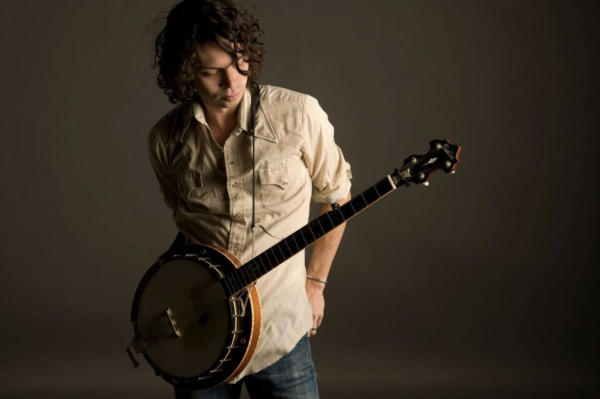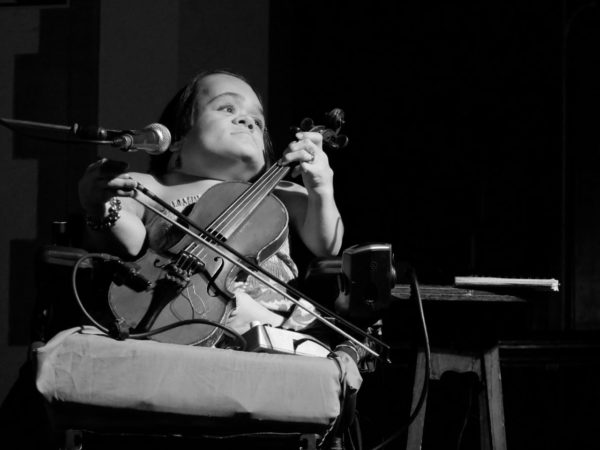By Eric Clow
As part of our Community Conversations, we added a new track with songwriters, joining us to share some of their strategies and writing prompts. The goal was to glean a bit of their wisdom from years in the trade, offer potential starting points for beginners and a place to keep writing for the more seasoned among us. Being a singer/songwriter who often struggles to maintain a routine writing practice, the desire for a regular gathering of songwriters has long been in my heart. Thankfully, our first session welcomed a facilitator who runs a group just like that.
Community Conversation: Songwriter Series with Dustin Welch: View on YouTube.
Dustin Welch grew up in Nashville surrounded by a lively and creative bunch of musicians, lyricists, and artists. He has since played in countless bands with the late Justin Townes Earle, Travis Nicholson, and Cary Ann Hearst. He has toured extensively and released three solo albums. Dustin describes his music as “Appalachian grooves and melodies coupled with lyrics, strange and beautiful.” He also founded Soldier Songs and Voices, a program to help veterans regain their voices through the healing power of music. This involves instrument donations and weekly workshops that delve into the nuts and bolts of songwriting.

In the first half of our conversation, Dustin imparted a wealth of knowledge so dense I can’t hope to relay it all here, but I can share what I found most impactful. Dustin also supplied a recap of the prompts he offered for you to try at home!
The economy of language.
Dustin defined this as “saying as much as possible within as little space as you can.” He referenced the six-word story that legend attributes to Ernest Hemingway: “For sale: baby shoes, never worn.” Rarely, if ever, has a sparse collection of words packed such an intense, emotional punch. Likewise, songs typically run about three minutes, so there is no room for extraneous words or needlessly repeating yourself.
Dustin’s Prompt 1: Write your life story in 24 lines, to the tune of “Mary Had A Little Lamb”, or something similar in the common meter family.
Imagery.
One of the most effective ways to draw a listener in is to vividly describe the scenes and characters that appear in your song. Being able to visualize your lyrics makes them memorable and allows for a deeper connection between you and your audience. Many writers already know this technique as “show, don’t tell.” But don’t stop at sights! There are four other senses to consider: sound, smell, taste, and touch.
Dustin’s Prompt 2: “What’s in your Box?”
Meaning, your treasured items you carry with you everywhere you go, moving from home to home, that you may not pull out and acknowledge often, but they are the things you simply can’t part with, because they are too precious or painful to let go of. For this idea, see it as an opportunity to write visually and focus on imagery; describing the photos and keepsakes which mean so much, but may not be properly described by outlining your emotional attachment. Instead, it leaves it up to the listener to fill in the pictures based on their own personal experiences.
Consistency of voice and tense.
Songs are usually written in one of three points of view (POV): I/We, You, or He/She/They (also known as first person, second person, and third person, respectively). Songs also tend toward one of three tenses: past, present, or future. It’s important to keep these consistent. Switching haphazardly between different POVs or positions in time can confuse your listener. This is not to say you are stuck with only one for the entirety of each song, but being aware of the POV and tense you are using ensures that any changes from the norm will have the impact you intended.
Dustin’s Prompt 3: “What is the uniform you wear now?”
This was a song prompt I offered to the members of the Armed Forces veteran community. Whether it’s the suit and tie you put on everyday, or the pair of coveralls, or maybe your tattoos and your scars. This was meant to signify how your individual identity in civilian life separates that being part of a unit which serves our country.
Tools not rules.
This is more of a disclaimer than a principle but one that should always linger in the back of your mind. If ever a song comes to you that refuses a verse/chorus structure, demands a shift in tense or POV, insists on ambiguity, or otherwise confounds your tried and true writing process, go with it! Each song is unique and we love them that way.
After presenting his insights, Dustin performed “Sparrows”, a master class in lyricism, melody writing, and the song that inspired his work with veterans. It’s a moving tale told from the point of view of a returning Vietnam War Vet. Many specifics are omitted from the song, and questions go unanswered. But it’s loaded with sensory details and a voice so clear that it captures your attention. (Scroll to the end of this post to see a rendition of this beautiful song on banjo.)
Veterans, family members of veterans, and emergency responders interested in developing their songwriting chops are welcome to join Dustin’s weekly Soldier Songs and Voices workshop. Find more information at www.soldiersongsandvoices.com
Up Next
We are also tremendously excited for Gaelynn Lea to lead our next songwriting workshop coming up Wednesday, October 7th from 7 to 8:00 PM CDT! Email [email protected] to register for this series.
If you missed Gaelynn Lea’s October virtual Songwriting Workshop with us, you can watch it here.

In the meantime, create your own country song and learn about Luckenbach, Texas–where everybody’s somebody–Wednesday, September 9th from 1 to 2:00 PM CDT. Click here to register for this next session of Texas Stories
Art Spark Texas
Art Spark Texas challenges perceptions of how people contribute by creating an arts-inspired, inclusive community of individuals with diverse abilities.
If you enjoy our Community Conversations and Texas Stories programming, please consider making a Donation today.
